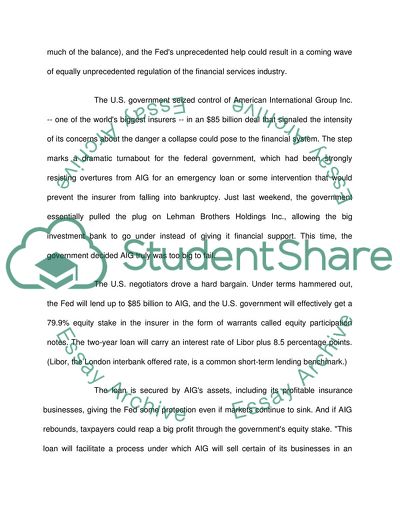Cite this document
(The Bailout of AIG Assignment Example | Topics and Well Written Essays - 1750 words, n.d.)
The Bailout of AIG Assignment Example | Topics and Well Written Essays - 1750 words. https://studentshare.org/finance-accounting/1723025-aig-and-the-bailout
The Bailout of AIG Assignment Example | Topics and Well Written Essays - 1750 words. https://studentshare.org/finance-accounting/1723025-aig-and-the-bailout
(The Bailout of AIG Assignment Example | Topics and Well Written Essays - 1750 Words)
The Bailout of AIG Assignment Example | Topics and Well Written Essays - 1750 Words. https://studentshare.org/finance-accounting/1723025-aig-and-the-bailout.
The Bailout of AIG Assignment Example | Topics and Well Written Essays - 1750 Words. https://studentshare.org/finance-accounting/1723025-aig-and-the-bailout.
“The Bailout of AIG Assignment Example | Topics and Well Written Essays - 1750 Words”. https://studentshare.org/finance-accounting/1723025-aig-and-the-bailout.


